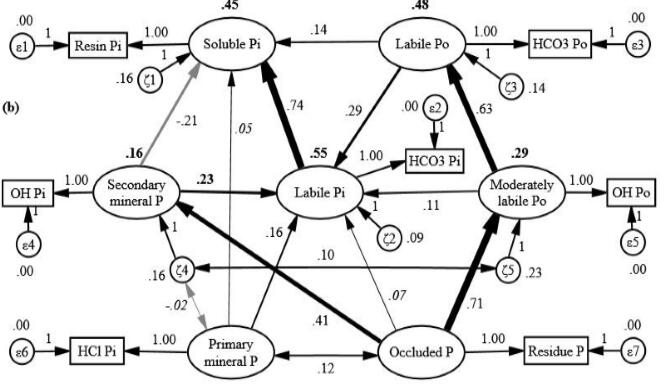Assessing nutrient availability for ecosystem gross primary productivity of global forests especially complex diversified tropical and subtropical forests is a fundamental and crucial work. Analyses from forest succession showed that soil microorganisms and specific chemical processes may coordinate closely to maintain high levels of available or potentially available P across this succession, and soil P cycling remained active and even more efficient in the late successional old-growth forests than in the earlier pioneers because of remarkably higher soil microbial biomass and larger pool of potential sources of available P fractions. Collectively we conclude that unlike the classically theoretical hypothesis from primary succession occurred across pedogenesis chronosequence, successions in subtropical forests may not always necessarily decrease soil P availability.
On an altitude gradient, we revealed a linearly increasing pattern of soil organic C, total N, microbial biomass C and N but a nonlinearly quadratic function of P concentration, C: P and N: P ratios with increasing altitude, as well as the relative importance of P vs. N limitation for biogeochemical processes shifts along the altitudinal gradient. At a global scale, our modified and tested hypothetical models (Fig. 1) on soil P transformation highlighted the central roles of relatively unstable labile inorganic P (Pi) rather than the well-known available Pi in mediating P transformation and in determining overall P availability in soils. This finding provides an alternatively perspective for a mechanistic study on the biogeochemical regulations of P transformation and P supply, with implications for the inclusion of appropriate P factor(s) into the terrestrial carbon cycle models.
The results have been published in Biology and Fertility of Soils 2016,52: 41-51, Scientific Reports 2016, 6: DOI: 10.1038/ srep24261, and Global Biogeochemical Cycles 2016, DOI:10.1002. This work was jointly funded by the National Natural Science Foundation of China and the Strategic Priority Research of the Chinese Academy of Sciences.

Fig. 1 A structural equation model result of phosphorus transformation in global unfertilized and uncultivated soils
